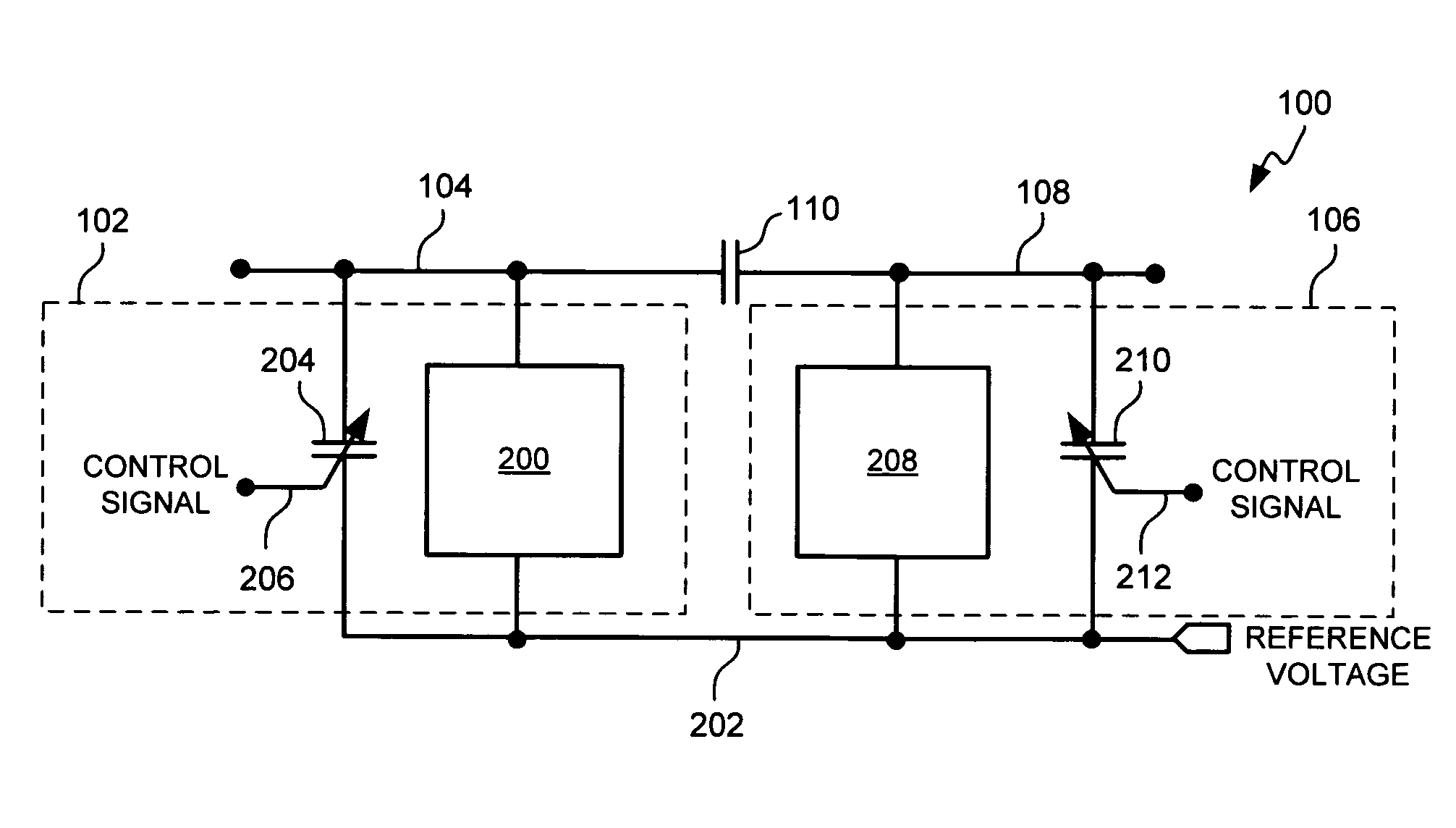Bandpass filter with tunable resonator
a bandpass filter and resonator technology, applied in the field of radio frequency (rf) electronics, can solve the problems of longer talk time and battery life, and achieve the effects of reducing the size, weight or cost of the handset, and less insertion loss
- Summary
- Abstract
- Description
- Claims
- Application Information
AI Technical Summary
Benefits of technology
Problems solved by technology
Method used
Image
Examples
Embodiment Construction
[0037]FIG. 1 is a schematic diagram of a tunable bandpass filter. The filter 100 comprises a first shunt-connected ferroelectric (FE) tunable tank circuit 102 having a first node 104 to accept an input signal. A second shunt-connected FE tunable tank circuit 106 has a second node 108 to supply a bandpass filtered signal. A first capacitor 110 is connected in series between the first node 104 and the second node 108.
[0038]FIG. 2 is a schematic diagram illustrating a first variation of the bandpass filter of FIG. 1. In this variation the first tank circuit 102 comprises a first resonator 200 having an input connected to the first node 104 and an output connected to a reference voltage 202. For example, the reference voltage can be an AC or DC ground. A second capacitor 204 has an input connected to the first node 104, an output connected to the reference voltage 202, and an input to accept a control signal on line 206. The second capacitor 206 includes an FE material with a dielectric...
PUM
 Login to View More
Login to View More Abstract
Description
Claims
Application Information
 Login to View More
Login to View More - R&D
- Intellectual Property
- Life Sciences
- Materials
- Tech Scout
- Unparalleled Data Quality
- Higher Quality Content
- 60% Fewer Hallucinations
Browse by: Latest US Patents, China's latest patents, Technical Efficacy Thesaurus, Application Domain, Technology Topic, Popular Technical Reports.
© 2025 PatSnap. All rights reserved.Legal|Privacy policy|Modern Slavery Act Transparency Statement|Sitemap|About US| Contact US: help@patsnap.com



